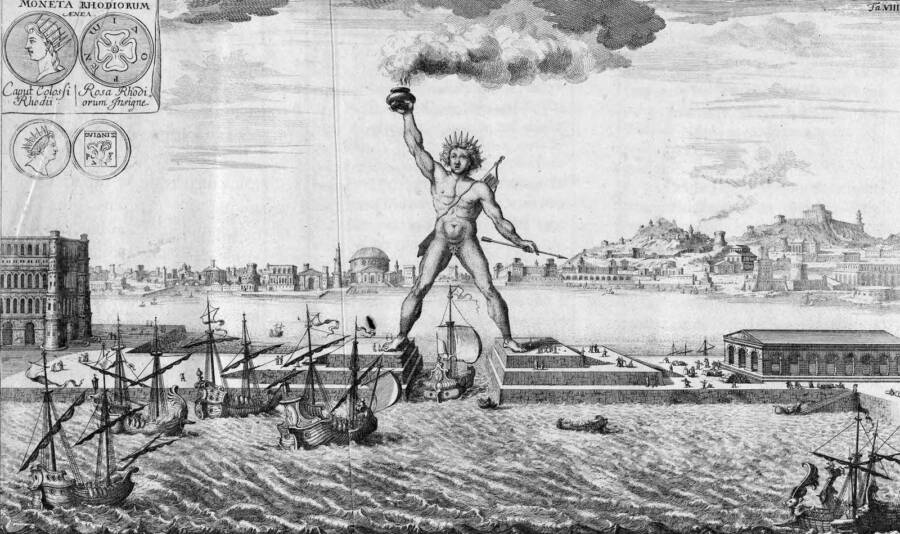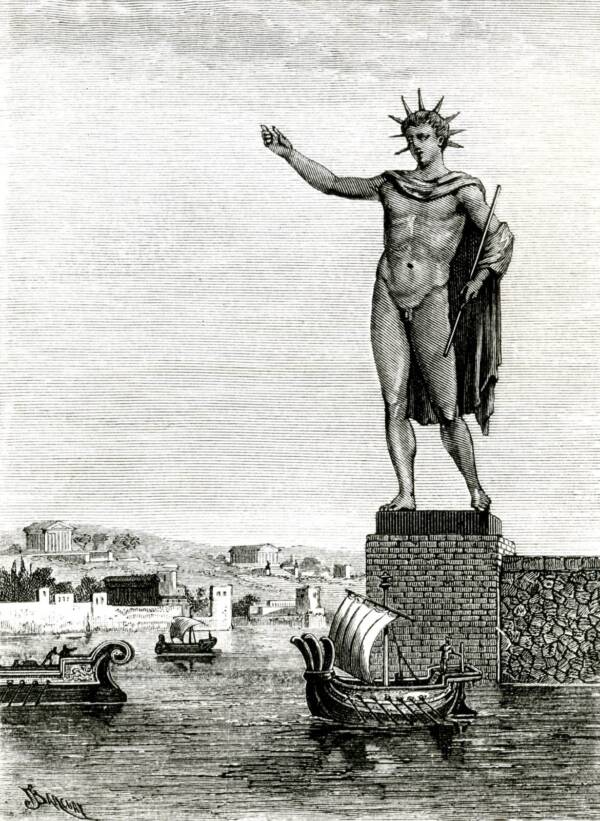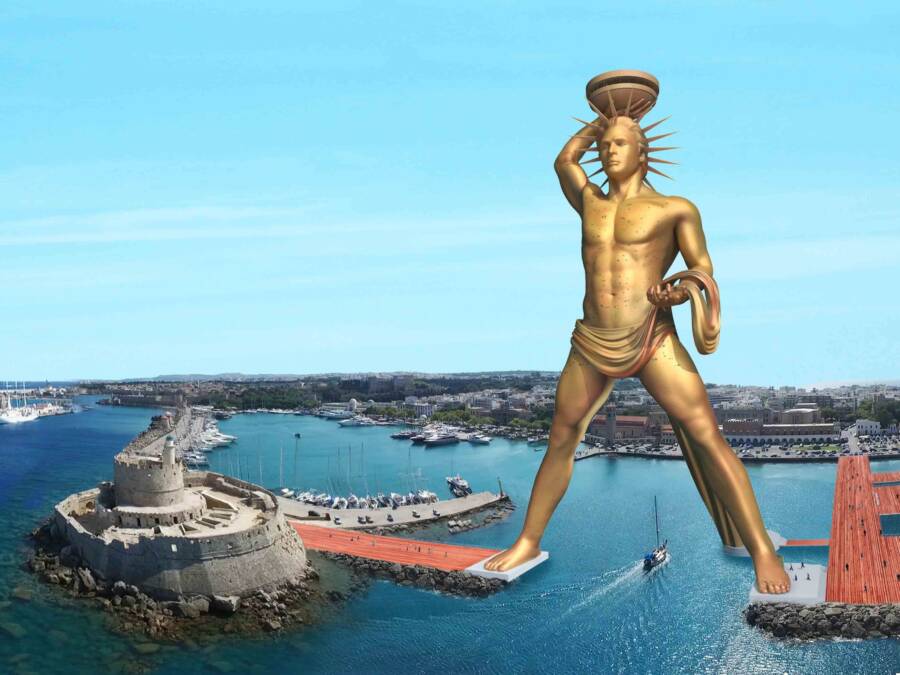One of the seven wonders of the ancient world, the Colossus of Rhodes stood for just 54 years until it was destroyed — and its true location remains a mystery.
In ancient times, few things inspired awe like the Colossus of Rhodes. This 108-foot bronze statue towered over the Greek city like a god on Earth, a perennial reminder of Rhodes’ triumph over its enemies.
Later destroyed by an earthquake and then melted down by an invading army, the statue left a powerful impression on the world’s collective memory. In fact, some in modern times have even tried to resurrect it.
This is the true story of the rise and fall of the Colossus of Rhodes, one of the seven wonders of the ancient world.
Why The Colossus Of Rhodes Was Built

Historical Picture Archive/Corbis via Getty ImagesA depiction of the Colossus of Rhodes, one of the seven wonders of the ancient world.
By 305 B.C., the city of Rhodes — located on the Greek island of the same name — was thriving as a prosperous trading port. Its success soon drew the attention of Antigonus I, a successor of Alexander the Great, who sent his son Demetrius I Poliorcetes to attack the city.
But Demetrius succeeded only in laying siege to Rhodes. And after a 12-month campaign, the so-called “Besieger of Cities” decided to abandon his efforts — much to the delight of Rhodes’ citizens.
To celebrate, they decided to erect a statue of the sun-god Helios. Demetrius had helpfully left behind many military materials, which the Rhodians were able to sell in order to fund their new venture.
Officials tapped Greek sculptor Chares of Lindos, another city on the island, to oversee their plan. A student of the famous sculptor Lysippus, who had built a 50-foot statue of the god Zeus, Chares got to work around 292 B.C.
The Rise And Fall Of The Colossus Of Rhodes

Public DomainThe Colossus of Rhodes likely stood with its feet together, and not straddling a bay as it’s often depicted.
For 12 years, workers toiled to build the Colossus of Rhodes. After laying a base of white marble for the statue’s feet — which likely stood together, and not over a bay entrance as it’s sometimes portrayed — workers built up an iron “skeleton,” which they affixed with bronze plates. At times, workers had to scale steep ramps to work on the statue’s upper portion.
By 280 B.C., the 108-foot statue was towering over the city of Rhodes. Its bronze plates must have sparkled and danced in the sun, an appropriate homage to the sun-god that it portrayed. Often depicted as standing by the harbor, it’s possible that Chares built it further inland.
Though its exact location is unfortunately lost to history, Greek poetry anthologies suggest that the following was inscribed at its base:
To you, Helios, yes to you the people of Dorian Rhodes raised this colossus high up to the heaven, after they had calmed the bronze wave of war, and crowned their country with spoils won from the enemy. Not only over the sea but also on land they set up the bright light of unfettered freedom.
For over 50 years, the stunning statue stood guard over the city. But then, in 226 B.C., a devastating earthquake hit Rhodes. The Colossus snapped at the knees — and immediately toppled to the ground.
Rhodians discussed rebuilding the statue — and their ally Ptolemy III of Egypt even offered to help with the project — but the Oracle of Delphi warned against it. So, the Colossus of Rhodes lay in ruins for centuries.
Yet the statue continued to inspire awe. People still flocked to see the Colossus ruins for hundreds of years. The Roman author Pliny the Elder even noted that the statue “excites our wonder and admiration” and raved about the size of its thumbs, which few men could “clasp in their arms.”
But then, in 654 A.D., the Colossus of Rhodes failed to impress Muslim caliph Muawiyah I. After storming the island, the caliph ordered the statue to be melted down. The raw materials were then sold to a Jewish merchant, who loaded them onto 900 camels and took them away forever.
Will This Lost Wonder Ever Be Rebuilt?

Colossus of Rhodes ProjectA 2015 proposal for rebuilding the statue suggested it stand almost 500 feet tall with its feet splayed over a harbor.
Despite the Oracle of Delphi’s warnings, plans to rebuild the awe-inspiring Colossus of Rhodes have emerged over the last few decades.
In 1961, the island pondered an idea to rebuild the statue out of aluminum. Thirty years later, island officials suggested rebuilding the Colossus in celebration of the 2004 Olympic Games in Athens.
Attempts were made again in 2008 and 2015, with the latter plan suggesting a €250 million statue looming nearly 500 feet high.
Each ambitious plan, however, fizzled out into nothing.
As such, the Colossus of Rhodes remains a wonder of the far distant past for now, alongside the likes of the Mausoleum at Halicarnassus and the Statue of Zeus. To people in modern times, it represents the glory days of the ancient world. Though it’s uncertain whether the statue will ever rise over Greece again, there’s no doubt that it looms large in human history.
After learning about the rise and fall of the Colossus of Rhodes, read about the other wonders of the ancient world. Then, read up on other ancient wonders like the Hanging Gardens of Babylon and the Lighthouse of Alexandria.





